Author Archives: Holly Christensen
Author Archives: Holly Christensen
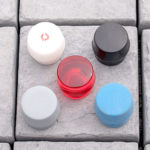
Most companies take an inventory of the equipment they may need to replace or purchase at the beginning of the year. It can be frustrating to have to spend money when none is coming in yet. Furthermore, you want something that is going to last. Yes, you can go to a big box store and buy inexpensive tools and equipment, but will they last? I firmly believe that you get what you pay for. There are times when I buy cheap knowing knowing a short life span will suit my needs. But when I need something tough and reliable, especially if my jobs revolve around that piece of equipment, I am willing to invest.

Here at Christensen’s, we know how important your tools are to you and your welfare, which is why we only carry professional grade quality products. Names like Felco, Truper, and AM Leonard. These products have been on the market for a very long time. This year we are pleased to introduce another great brand into our stores.

Halder is a German company that has been around for over 80 years. Their specialty is producing high quality striking and forestry tools. We will be stocking some of their Simplex mallets. What makes these mallets unique is that every part is replaceable! This tool has a cast steel housing with an integrated handle sleeve that offers a high resistance to handle breakage. The faces are interchangeable, offering you options with different degrees of hardness allowing you to quickly adapt for different materials. We offer five different faces, including the two that come with the handle. You'll also be able to replace the housing or handle if you manage to break it, which seems unlikely with this level of quality. But I welcome you to try!

This spring, stop in at Christensen’s Plant & Hardscape Centers and let us equip you with the tools and products you need to be successful. Your job is tough, your tools should be, too. Let us show you our professional grade tools that are made to last.

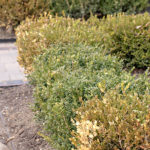
Boxwood blight is a fungal disease of boxwood that results in the defoliation and decline of boxwood plants. Once it’s in the landscape it is very costly and difficult to control with fungicides. The boxwood blight fungus has a short life cycle and infections can spread quickly between plants, especially under humid, warm and wet conditions that favor disease development.
The main way that this disease is spread is through the movement of infected plants, cuttings, and boxwood debris. The sticky fungus spores are also spread on contaminated tools and equipment, worker's clothes, and water. The spores are unlikely to travel long distances through the wind. All plants infected with the fungus should be destroyed, as the chance of further spreading the fungus is highly probable. Limiting the spread of this sticky fungus is very difficult and can only be accomplished by following good sanitation practices.

Boxwood blight has been found in Michigan. Because of this we will NOT accept any returns on boxwood once they have left the nursery. We will also ask that you do not bring any boxwood plants, leaf litter, or clippings into our nursery. We reserve the right to not load any vehicle that has boxwood or debris from outside of our nursery. Please do not bring in any samples of boxwood that you are trying to match - take several pictures of the plant you are trying to match and we will help the best we can.
Boxwood blight can look like many other issues that boxwood can have, such as leaf spot, winter burn, and other non-threatening fungal diseases. This means that:
The only way to confirm whether a plant has boxwood blight is to submit samples to a professional plant disease diagnostic lab.

NOT Boxwood Blight - this is winter damage.
Cooperative extension agents will be able to help you in submitting samples if you need help. Affected branches, stems, and leaves make the best samples, don’t forget to also take pictures.
If you do suspect that a plant has boxwood blight, you can send a sample to MSU Diagnostic Services. You can contact them at http://www.pestid.msu.edu/ or through the Michigan Department of Agriculture.
More information and pictures here: Boxwood Blight

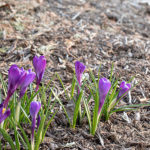
You’ve just installed your plant material and now it’s time to decide which material to use to cover the soil. The two most common materials are mulch and stone. Aesthetic preferences aside, here are some pros and cons for each.
We’ll start with stone. Starting with the pros, stone does not break down and need replacing. Also, you have few issues with weeds initially due to the use of weed barrier fabric. One of the problems with stone is that it is much more expensive to install, though some would argue that the upfront costs are offset by the fact that it doesn’t have to be replaced annually.

The primary issues are maintenance. Though weed barrier is effective in the short term, eventually a layer of dust and plant material create a medium on top of the fabric that weeds can and will grow in. This can be mitigated somewhat by careful cleaning of the beds (the heavier the stone the better for cleaning), but eventually weeds will become a real problem.

Physically removing weeds is difficult. Chemical removal is an option, but then you still have to struggle to remove them once they’ve died. Also, stone does not benefit the landscape planting in any way, and though weed barrier fabric is designed to allow water to get through, if there is any kind of slope, more water will run off than soak in compared to not using it. Over time the fabric may degrade or show through, then you can have a real mess.

Also, stone in a sunny location can get uncomfortably hot for some plants. Adding or removing plants, as well as working on irrigation, becomes more difficult in a stone bed. For many though, the aesthetic value is worth any complications.
With mulch, I will start with the cons. It does have to be replaced as it breaks down. If you replace it yearly for aesthetic reasons, the old mulch might need to be removed to prevent a harmful build up. We've all seen towering cones of much piled against tree trunks, and it is not a good thing.

If you wait for it decompose sufficiently, removal of the old mulch may not be necessary. Mulch is also susceptible to more weed growth initially than stone, though the weeds are easier to remove physically. Mulch can become matted as the season progresses causing some water runoff, but a quick fluffing or cultivating of the mulch will break up mats to restore proper absorption. The best thing about mulch is its benefit to the plant material.

Mulch is good for water retention in the soil, provided there’s enough water to permeate the mulch in the first place. Mulch also provides a good environment for beneficial insects, fungi, and microbes in the soil. Some amount of nutrients are also made available to the plants as the mulch decomposes. Mulch also provides insulation for plant roots that is effective in hot and cold conditions.

Badly degraded landscape fabric around a street tree.
It is a waste of money to use weed barrier fabric under mulch as you are defeating the purpose by immediately placing a medium in which weeds can grow on top of it.
Here's a quick recap of the pros and cons of each material:
Pros, Stone
Cons, Stone
Pros, Mulch
Cons, Mulch
Stone or mulch? The final decision I leave to you.


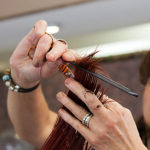
For those of you who don’t know, I have been a hairdresser for almost 35 years (...yes, I started VERY young). With the clientele I still maintain, spring is the time of year my customers want "a little more off the top". It's the time of year temperatures change and HUMIDITY can alter the decision of a new spring 'do. It’s kind of the same with my roses!
Here at CPC, and for you and your customers, spring is the best time for cleaning up, shearing up, and shaping up your roses. After the snow is gone but before new leaves start to pop, it's the perfect time to give these beauties a bit of attention for top performance. While we are all looking forward to color and growth in our landscape, nothing holds court like a well-maintained rose bush.

Pink Knock Out® rose, ready for spring
Just as I cut off fried hair and split ends while styling my clients, when cleaning up roses I begin by removing last year's old leaves from on and around the plants. This reduces pests or disease carried over from last season. You'll want to cut back dead wood, broken or crossing branches, and anything smaller than a straw. It might seem like giving a pixie cut when you're going for long layers, but clearing out all this extra branching allows for better airflow - and airflow is key for keeping rose foliage healthy. When trimming the remaining branches, cutting above outward facing buds directs the growth upward and outward for a more optimal vase-shaped form.

Pink Knock Out®
Knock Out® roses are considered a shrub rose and self-cleaning. However, they still benefit from a nice cleanup in the spring, especially after they've had a few years in the ground. I like to take them down to about 12-18". They are such vigorous growers that, if you don't show them who's boss, you'll find yourself with a plant much larger than you intended.

Here's a happy climbing rose
Climbing roses are a little different. They have main, upright branches and lateral ones. The main branches should be left alone as much as possible. If cut, the plant will focus it’s energy on recovering height before pushing out lateral growth, which is where you'll get flowers. When pruning lateral branching there is no worry where to cut around the buds, anywhere will encourage a push of new growth and those desirable flowers.
So have no fear when considering your spring maintenance program. Sharpen those tools and get pruning! Oh, and don't forget your gloves.

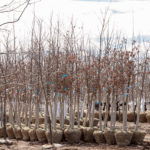
Welcome to Spring 2019!!! The Detroit Tigers home opener is April 4, and Christensen’s has already had its season opener. So let’s play ball!
Over the past winter, as in every winter, we have spent a significant amount of time getting ready for this season. Equipment, people, processes, pricing. Everything is repaired, trained, updated, and reviewed to get ready to serve you, our customers, in the best way possible for the year.

The first question I usually get from our customers is, “How far did pricing go up this year?” This year I am happy to report, not much - if at all. The buyers and managers here at Christensen’s Plant and Hardscape Centers have worked very hard at keeping our prices as close to 2018 prices as possible. We know that everything in your business has increased quite dramatically over the past several years. It surely has in our business. So this year we felt it was very important to help our customers keep their profitability.
Our price catalogs have been mailed and you should have yours in hand. If you need extra copies for your office or truck, we can provide them. Our Hardscape catalog is at the printer and will be ready soon, so grab your copy on your next visit.

As always, we thank you for your continued business. We enjoy the relationships we have made over the past eighty-eight years. May you all have a safe and blessed 2019!

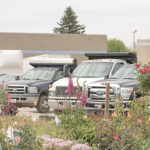
For the past year, I have brought my 13 year old puppy to work with me. He has spent his days sleeping in my office, hitting up the sales staff for food, and greeting every customer that he can here at Christensen’s, both in the Plant Center and the Hardscape Center.
While watching Garin interact with you and your employees, it has reminded me of how much like the TV show Cheers this place really is. We love seeing you come in. Good days, bad days, rain and sun, having that interaction with your companies has been nothing short of magical. We look forward to seeing and talking to you every day.

This year has not been without its trials and tribulations. The labor situation has affected every aspect of our industry. Seemingly the entire state has lamented the lack of good labor this year. Couple that with trucking issues caused by the ELD implementation, and the year has definitely had its challenges. But as always this industry has risen above them and created a very successful year. A huge testament to you, our contractors that make this industry what it is.

As we move to the winter of our season, we wish you peace and prosperity. You have made our season wonderful through your presence and continued business. From the entire team at Christensen’s Plant and Hardscape Centers, have a wonderful holiday and we look forward to seeing you in 2019.

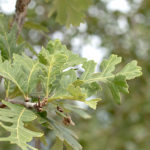
As the 2018 season draws to a close, you are probably ready for a well-deserved break. We are, too!
But did you know that even during the off-season we are here to assist you? I know it’s probably the last thing you want to think about right now, but if your bid is due or you’re planning your upcoming season, we can help with these needs.

During the winter months we have a few members of our team staffed to quote your bid or upcoming job. The advantage of doing this early is that we can search for and source specific material so it can be brought in once the season starts. When material is as scarce as it has been the past few years, getting orders in early can make all the difference. Let’s say you need some 5” Oaks or something else we don’t regularly stock - getting that information to us as soon as possible is vital to ensure we can meet your needs.

The process is easy, you can go to our website (Christensen's Plant Center) or download our app and click on the contact us / quote link to submit your request. Contact any of our salespeople directly with questions or to request a quote on your project. Our knowledgeable and long-time sales staff can help you select everything you need for your landscape projects – quickly, efficiently and affordably – so you can get back out on the job.

Not sure who to contact? Any of our salespeople would be happy to assist you! Call our main office at (734) 454-1400, or if you prefer, fill out the contact form and we will contact you.
Let us help you get the year started off right!

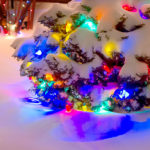
It’s not just for December any more.
As we approach year's end, homes are being decorated and lit up for the Holiday season. However, seasonal outdoor lighting is catching on for other holidays too, like Halloween and Independence Day. Probably not Groundhog Day. But maybe we can make that a thing.
How can you give your customers the ultimate in flexibility when customizing holiday lighting?
Whether it’s a brand new lighting system with the latest technology, swapping colored MR16 lamps into an existing system, or powering regular light strands and other decorations from an adapter that you operate from the palm of your hand - we can help you customize your lighting designs for that “wow factor” that your customers deserve.

Alliance BL200-BT. The Alliance Bluetooth Bullet fixture has a 4 watt integrated color changing lamp that you completely control from your smart phone. This product is truly innovative. Pick the preset colors of your choice or use the color prism on the phone app to get the exact color that you want! Every holiday color scheme has just become easy. The fixture also has three preset white settings, and can be dimmed.
What else can these little miracles do? They can be zoned, grouped, operated individually, or together. These fixtures have antennas that operate through a mesh Bluetooth technology, meaning that each fixture networks with each other. The more fixtures that you have installed, the stronger the Bluetooth signal will be. I have personally installed 7 at 50 feet away from 2 groupings and it worked flawlessly
Because the technology is built directly into the fixture itself, there is no need for additional equipment to install, and it will operate with any low voltage transformer from any manufacturer. The BL200-BT fixtures operate through a free iPhone or Android app. We'd love to show you how these work, so please stop by our Hardscape Center for a demo.
Brilliance Smart Socket WiFi Adapter. This product is an absolute game changer! Designed by Brilliance LED for landscape lighting systems, these adapters synchronize with your home’s WiFi network so that you may operate your system from ANYWHERE, at ANY TIME. Whether you are just outside on your patio or on vacation in Australia, so long as the adapter is connected to your WiFi, you will have complete control of it. You can set up on/off times on a 7 day week, or operate it manually through your smart phone. And if your customer doesn’t have a landscape lighting system, the Smart Socket will operate nearly anything that you plug into it. Don’t be fooled by the other cheap WiFi adapters on the market. These are built to last!

Alliance iTimer. If you are familiar with Alliance’s popular BT150/BT300 transformers, then you’ll fully understand how these work. The iTimer runs on Bluetooth technology that will synchronize with your smart phone. Its internal astrological clock will do all the work for you once it links up with the GPS settings on your phone. After that, plug in whatever you wish into it, set up you timing schedules, and you’re done. These are excellent timers for locations that are just outside of a home’s Wifi range.
Colored MR16 Lamps. If you are looking for a lamp in one specific color, such as blue for enhancing a blue spruce or maybe green to give a boxwood hedge that extra pop, chances are that we can help you make that happen. Christensen’s Plant & Hardscape Centers has strong distribution relationships with Sollos, Alliance, Brilliance LED, and Integral Lighting, so chances are high that we can get the color that you’re looking for at a competitive price, and in a manageable amount of time.
These examples that I have listed for you will enable you to expand a new lighting project, or enhance a previous one. For more information, please contact us or stop by and we will be happy to show you how these products operate and how they will benefit your customer.


When I was drafted by my father to work in our retail store back in the 70’s I knew absolutely nothing about plants, let alone the Garden Center business. I started out running the cash register and quickly learned that it was easier to remember the answers to customer’s questions than to spend time looking them up on a busy spring day. There is nothing like retail in the Garden Center business - I don't miss working those seven-day weeks! I still have the occasional nightmare of a checkout line stretched out the door and I'm running low on change.
Our retail store on Ann Arbor Road, in 1981
My dad hired a young guy by the name of Tim Joy to manage the store and I probably about killed him asking a million questions about plants and bugs and everything else. Tim was my first mentor in the nursery business and I owe a lot to his patience with me back in the day. My second mentor and friend was Mary B. Begle, who knew everything there was to know about perennial gardening, and I learned more from her than many people learn from a degree in horticulture. Mary was opinionated and funny and I looked forward to every day, except Wednesday which was her day off.
Did you have a mentor when you started in the Green Industry? There is so much that you can’t learn from a book or the internet that only a person who’s been on the job can teach you. Sure, you can sift your way through 1,000 pages of YouTube videos but who even knows if what you are finding is applicable to your situation. Having a person with real-world experience to guide you can make a gigantic difference in your success.
Being a mentor is another way to increase your success. Teaching someone benefits you in two ways; it hones your own skill while it creates a person with the ability to do a job, do it well, and do it without constant supervision. Now you’ve freed yourself up to concentrate on managing your business instead of pulling weeds. There isn’t one business person I know who couldn’t use more time in the day, am I right?
What makes a good mentor? Your mentee is going to make mistakes - your job is to help them to understand what went wrong and reinforce what went right. Micro-managing is not your goal here. Your mentee is going to learn and grow best when you give them the information they need to realize on their own the validity of your approach. You might learn something new yourself during the process, so you'll want to allow feedback.
This is a two-way relationship. A good mentee is open to learning and listening. They'll have reasons for doing things "their" way but should be able to accept your guidance without digging in and arguing when they don't have all the facts. A person who is receptive is going to be much more successful than one who thinks they know everything.
Mentoring pays big benefits to both you and your employee. If you are already doing this for someone, you’re a hero. If you’re not, what are you waiting for? Those weeds won’t pull themselves.
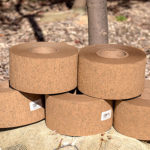
You’ll never really know your profits for this year until you finish your replacements next year! Winter protection can help reduce these. Although we don’t mind selling you replacement plants, we do want your business to be as successful as possible
Three common practices we have covered in previous articles are applying Wilt Pruf on your broadleaf evergreens, putting up burlap screens as barriers to salt and wind, and using bark protectors to prevent deer and rabbit damage. There are two other recommendations I can give you.

Preventing frost cracks. Previous minor wounds, scuffs or scrapes on a tree trunk even when healed react differently to expansion and contraction from freezing and thawing repeatedly during the winter. The wood can split right open, sometimes with a sound like a rifle shot. This commonly happens on the sunny south or west side of the tree. One way to prevent this is to apply tree wrap each fall. This is a 4” wide waterproof, crinkled paper that you wrap around the trunks of young, thin-barked trees to protect from both sunscald and moisture loss. The death of the sap-carrying tissue from cracks or cankers can cause a surprising amount of damage higher up the tree. The tree wrap should be removed in the spring.

Provide adequate moisture. You may say “The plant has lost its leaves, why do I still need to water?” You may not realize that the optimum time for roots to grow is the fall season, right up until the ground freezes, which in some years is not until January. We often get rain this time of year but newly planted trees often need supplemental watering while they are replacing roots lost from being moved.
Even during winter months plant roots continue to replace moisture lost to drying winds and sun. Evergreens, both needled and broadleaved are particularly vulnerable. Plants that take up enough water will have the best chance to survive our winters and be ready for the spring push.

So water well, and mulch those beds to prevent desiccation during those below freezing weeks and hopefully your landscape jobs will look as good in the spring as they did when you installed them.
